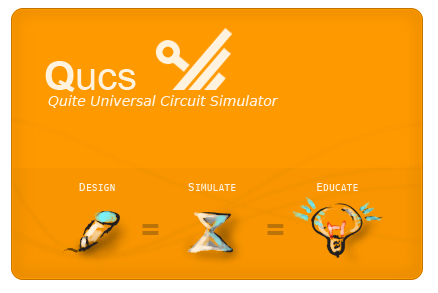Qucs project news: preparing for release 0.0.19

Qucs is an open source electronic circuit simulator. My previous article on Habré tells about it.
Now our project is preparing for the next release of 0.0.19, which will be released before September 1 of the current year. Since the previous release (September 1, 2014), 6 developers made more than 700 commits. This note contains a brief overview of the expected innovations.
')
Download snapshots of the pre-release version here:
- Source code (all Linux, MacOS, Windows platforms):
sourceforge.net/projects/qucs/files/qucs/0.0.19-snapshots - Installer for Windows:
sourceforge.net/projects/qucs/files/qucs-binary/0.0.19-snapshots
Snapshots are not recommended for use in daily work! This is a test version! To work, use the stable version 0.0.18
Report bugs to our bugtracker: github.com/Qucs/qucs/issues
Under the cat a brief overview of the changes.
Here is a short list of changes. After the release of the release will be a detailed article describing all the innovations.
- Added a new tool for the synthesis of active filters. LPF, HPF, bandpass and bandpass filters of Chebyshev, Butterworth, Cower and filter with approximation of the frequency response, set by the user are supported. Available circuitry links Sallen-Key, with multi-loop OS and filter links Kauer. The filter scheme can be calculated, copied to the system clipboard and pasted into Qucs to simulate.
This utility looks like this:
- Modified utility for the synthesis of passive filters. New link topologies have been added: microstrip filters with various linking methods. The utility window now looks like this:

- A new component has been added: inductively coupled coils with a customizable number of coils. It can be used in circuits if 2 or 3 connected coils are not enough. The component looks like this:

- Slowly but surely, we continue porting to Qt4
- The project is fully translated to C ++ 11
- Closed over 50 bug reports
- The Spice4Qucs subsystem is prepared for merging with the main branch. This is one of the most anticipated project innovations in recent years. This subsystem allows you to simulate Qucs schemes using external spice-compatible open-source simulators ngspice and Xyce . Xyce has a version for parallel computing via openMPI. Any refinement of the scheme for this is not required. In this case, compatibility with previous versions of Qucs will be fully preserved. Special components will be added with which you can directly connect models of semiconductor components in Spice format. Additional types of simulations from Ngpsice (Fourier, Distortion and Noise) will also be available, which can be used in addition to the standard Qucs simulations. To process the results, you can connect the post-processor Ngnutmeg. Here is an example of the scheme that Spice4Qucs allows to implement:

The Spice4Qucs subsystem is not yet included in the main branch and therefore is not present in snapshots. To test Spice4Qucs, you need to build an unstable branch yourself from source: github.com/Qucs/qucs/tree/spice4qucs . Read more about the development of spice4qucs here: github.com/Qucs/qucs/issues/77
Source: https://habr.com/ru/post/259193/
All Articles